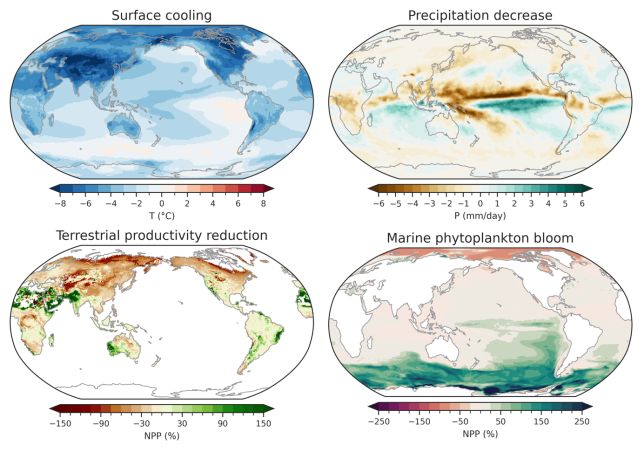Simulations of a potential impact due to a space-rock event from the next century have revealed that the rough ride where humanity would be, which indicates what it needed to survive such a catastrophe.
It has been a long, long time since the earth was beaten by a large asteroid, but that does not mean that we are clear. The space is full of rocks, and many of those zippers blithely on jobs that can bring them in violent contact with our planet.
One is asteroid Bennu, the recent happy target of an asteroid sample collection mission. In just 157 years – September of 2182 CE, to be precise – it has a chance to clash with the earth.
That chance is certainly small, only 1 in 2,700 or 0.04 percent. But that’s not zero.
To be prepared for the worst, climate scientists in South Korea have modeled what would happen if such a collision took place, especially in view of the fact that the last large asteroid impact 66 million years ago, known as Chicxulub, is involved in the extinction of the extinction of The extinction dinosaurs.
Bennu, 500 meters (1,640 feet), is considerably smaller than the estimated size of 10 to 15 kilometers from the Chicxulub – impactor – but the results are alarming.
https://www.youtube.com/watch?v=ankMTU89X_A frame order = “0 ″ all =” accelerometer; Autoplay; clipboard writing; coded media; gyroscope; Picture-in-Picture; Web-Share “ReferencerPolicy =” Strict-Origin-When-Cross-Origin “Tolfullscreen>
“Our simulations, which inject up to 400 million tons of dust into the stratosphere, show clear disruptions in the climate, atmospheric chemistry and global photosynthesis,” write Lan Dai and Axel Timmerman of Pusan National University in South Korea.
“Global average temperatures are expected to fall by 4 degrees Celsius and the global precipitation falls by 15 percent in our simulations.”
The effects of a medium -sized to major impact are not fully known; Such a catastrophic event probably has long and far -reaching consequences. Scientists have investigated the effects of the Chicxulub impact based on geological, fossil and tree records, which combine to paint a pretty grim image.
To understand the effects of future effects, DAI and carpenter used the Aleeph Supercomputer in the IBS center of the University of Climate Physics to simulate a 500-meter asteroid bumping into the earth, including simulations of terrestrial and marine ecosystems that were omitted from earlier simulations.
It is not the crash tree that would destroy the earth, but what would come after. Such an impact would release 100 to 400 million tons of dust in the atmosphere of the planet, the researchers, who disturb the chemistry of the atmosphere, found the sun sufficiently to dimming to disturb the photosynthesis and hit the climate like a scrap ball.
In addition to the decrease in temperature and precipitation, their results showed an ozone exhaust of 32 percent. Previous studies have shown that exhaustion of the ozone can destroy the plant life of the earth.
“The abrupt Impact Winter would offer unfavorable climate conditions for plants to grow, which leads to a first reduction in photosynthesis of 20 to 30 percent in terrestrial and marine ecosystems,” says Dai. “This would probably cause enormous disruptions in global food security.”
But it is not all downfall and gloom. Although terrestrial plants are sensitive to such changes and take a while to recover, algae who live in water bodies not only faster and recovered within a few months, they grew to volumes that they do not reach under current, normal climate conditions.

This unexpected behavior was linked to iron in the asteroid substance and dust from materials that was thrown out of the earth at impact, a nutrient that helped the simulated algae thrive. This was especially the case for marine diatoms, on which zooplankton feed – which suggests a possible road to relieve food insecurity, the researchers say.
It is impossible to say exactly how often our planet has been beaten by large asteroids in its history. Craters are deleted and covered by erosion processes. Some large rocks explode in the air, which means that only debris is lagging behind that is difficult to identify in the geological file if you are not looking for it.
However, estimates suggest that it is not uncommon. Which means that humanity as a whole would probably survive a rendez -vous with Bennu, albeit in smaller numbers than before, and with a dramatically changed lifestyle, at least for a while.
“On average, medium -sized asteroids collide on the earth about 100 to 200 thousand years,” says Timmermann. “This means that our early human ancestors have previously experienced some of these planetary events with possible effects on human evolution and even our own genetic makeup.”
We are as bad as cockroaches, to be honest.
The research has been published in Science is progressing.


